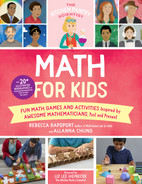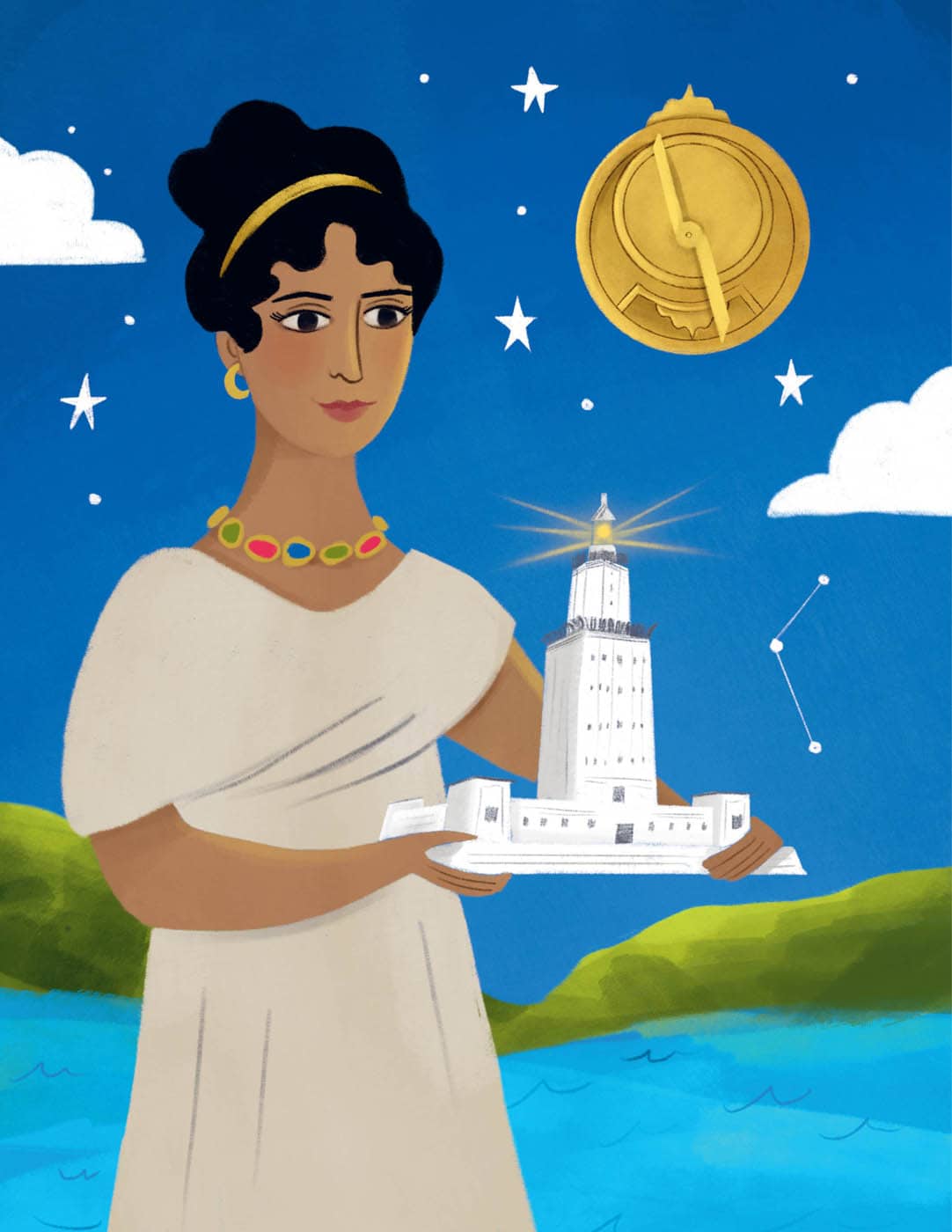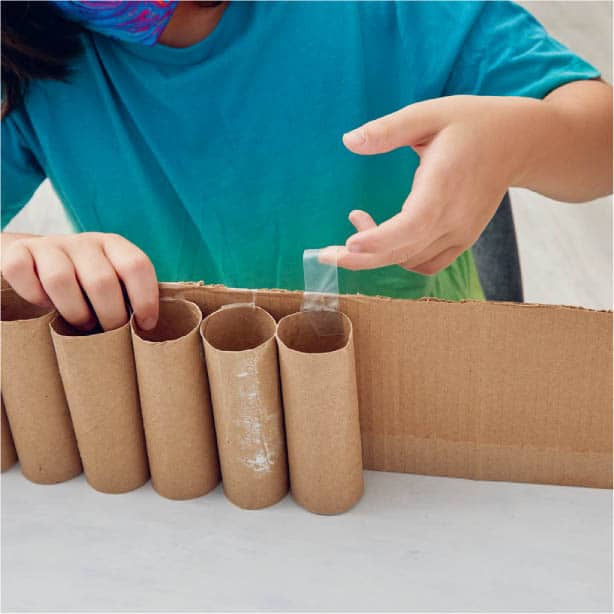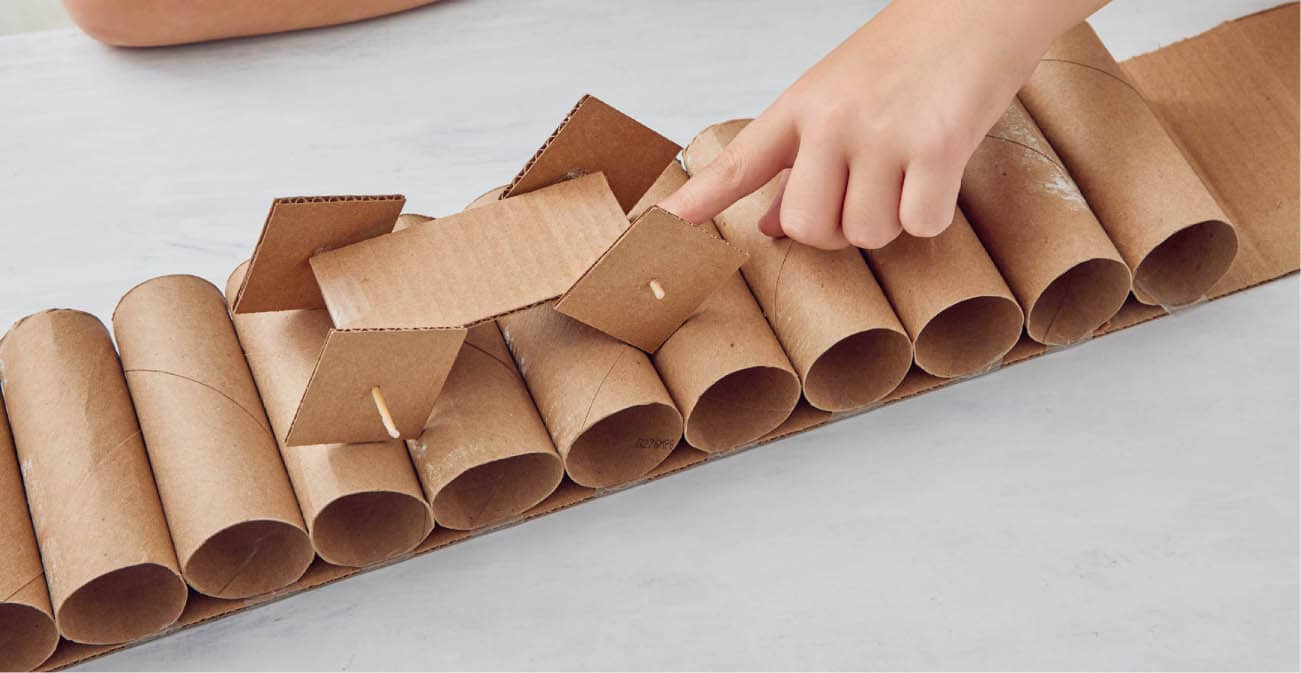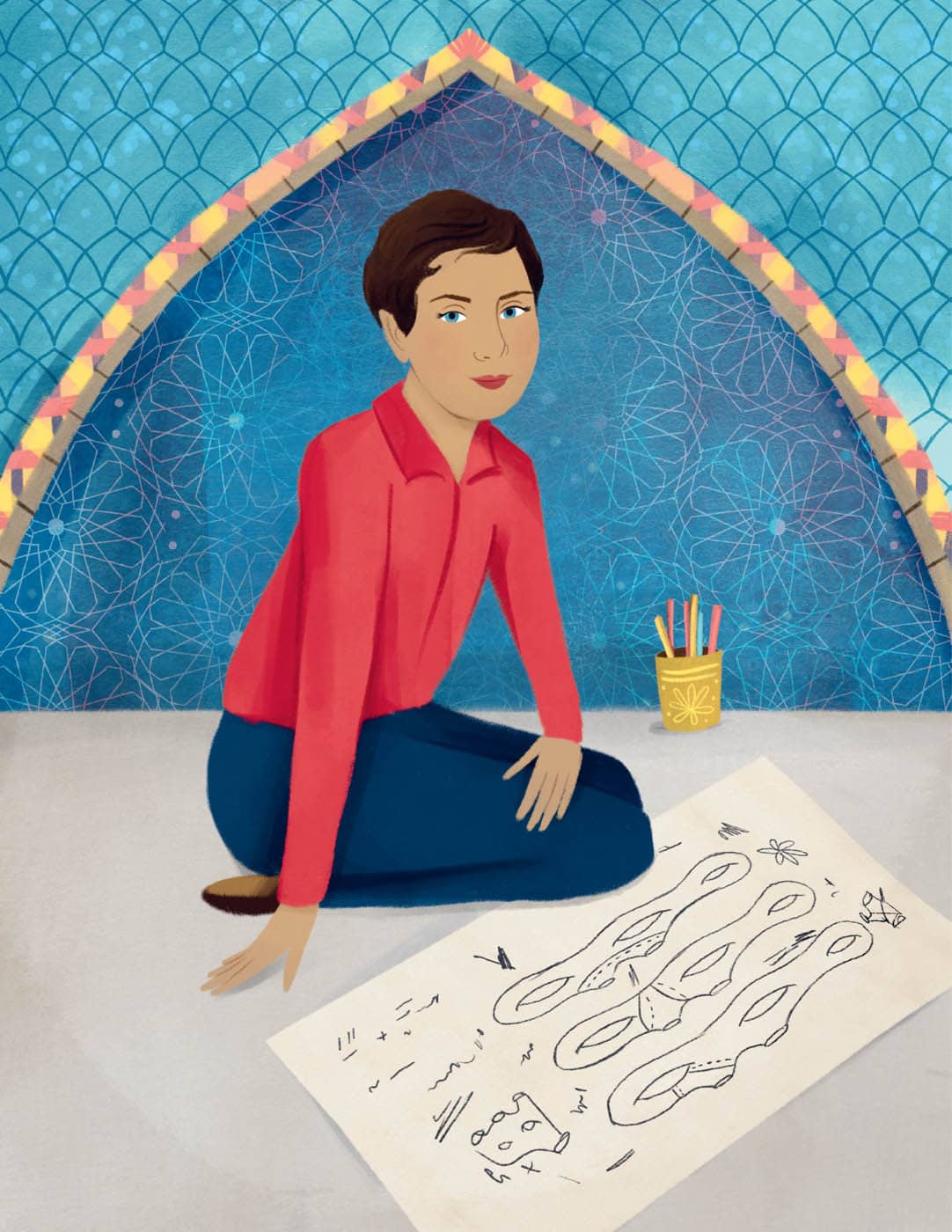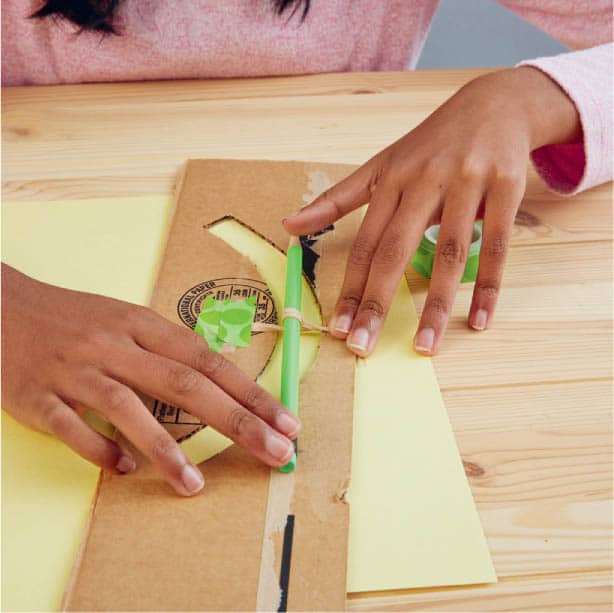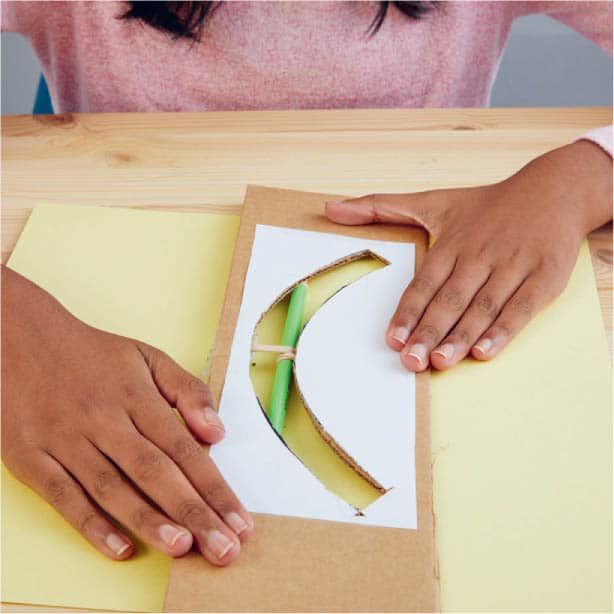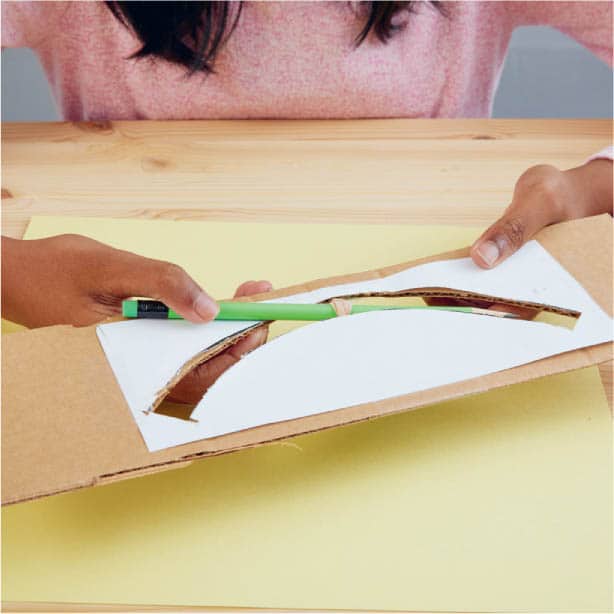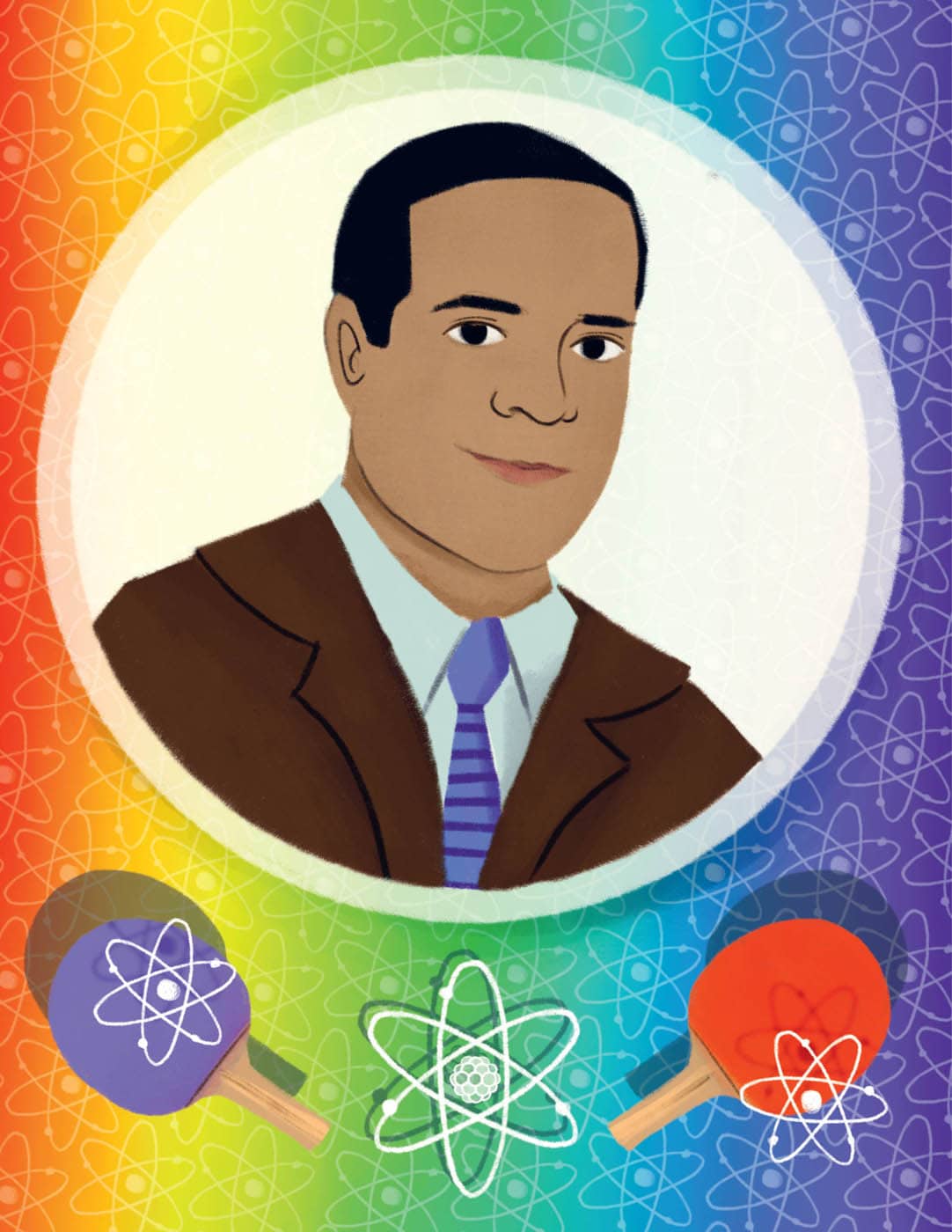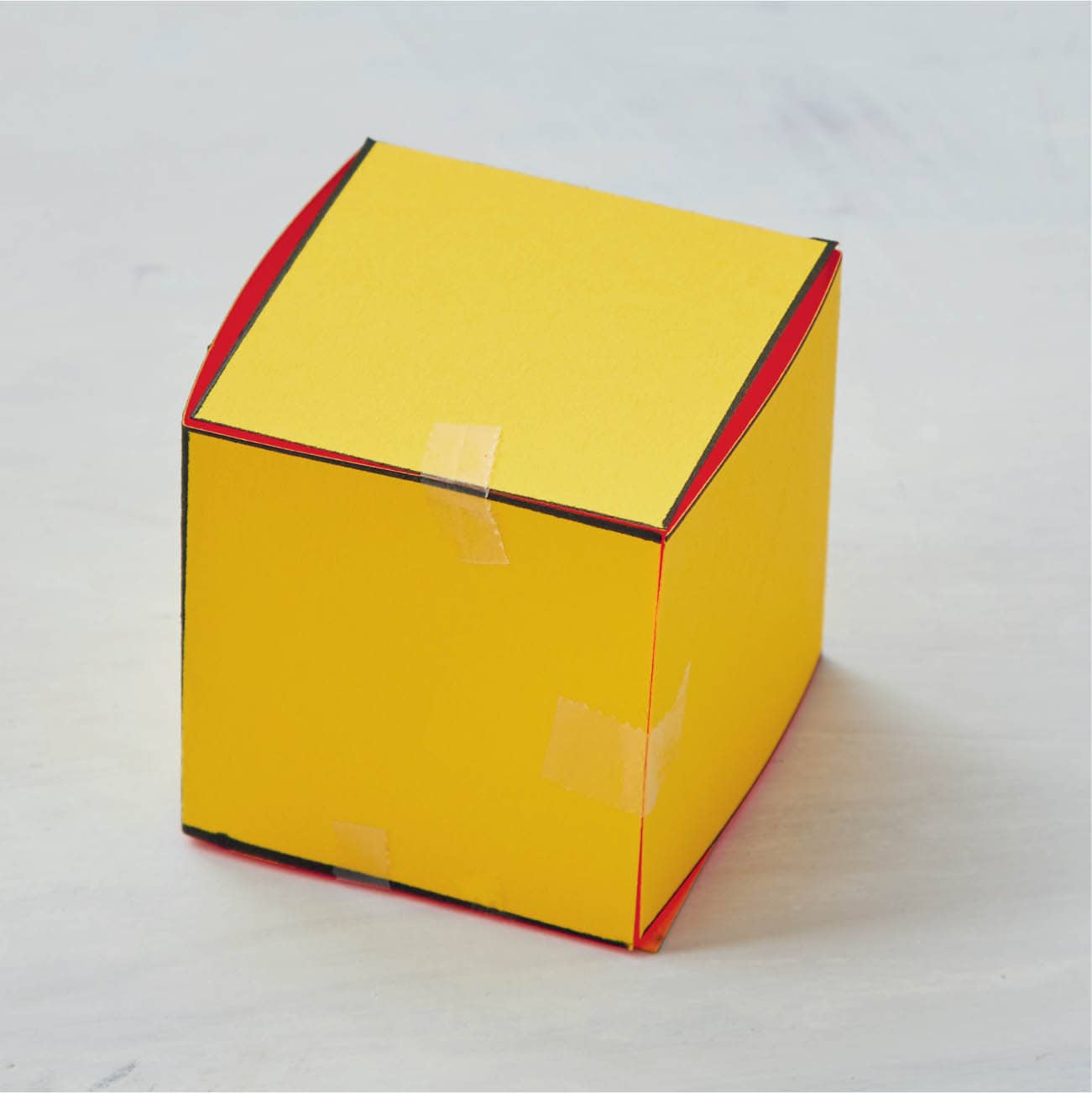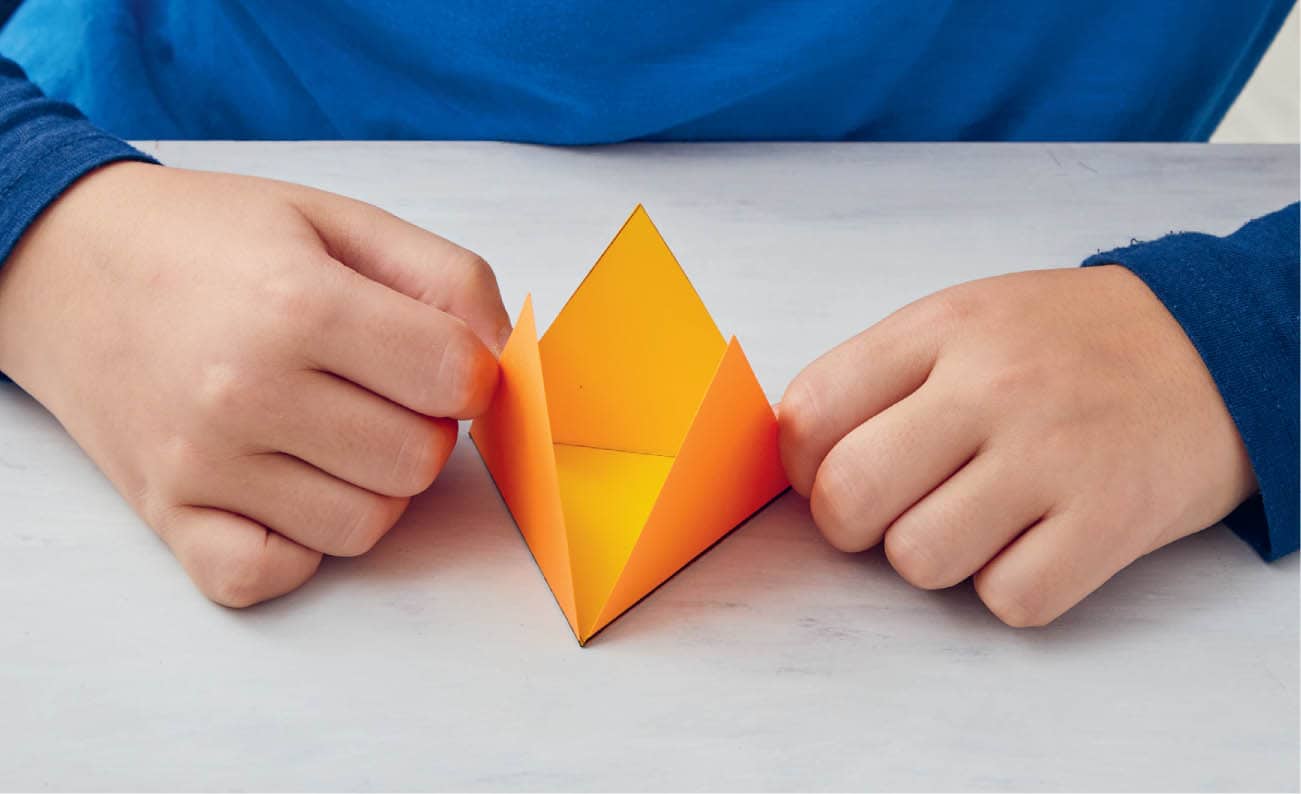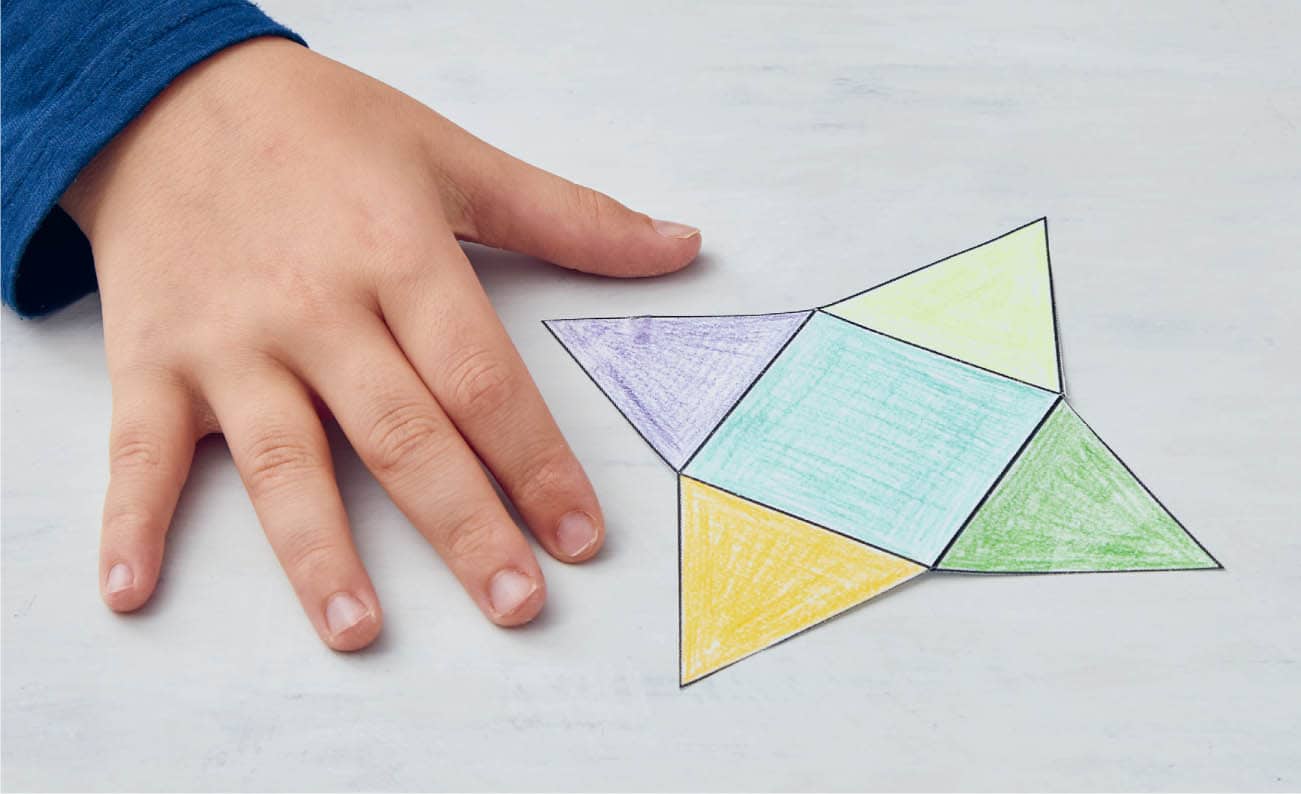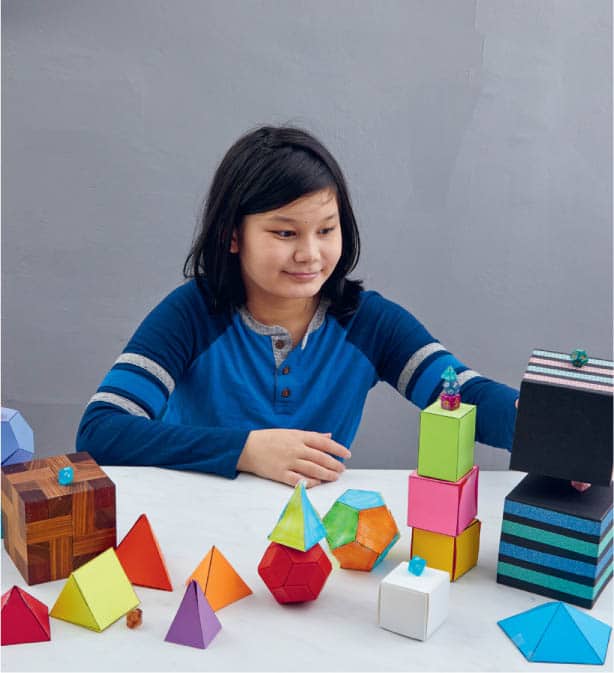Hypatia
c. 350–370 – March 415
FAMOUS IN HER TIME
Hypatia was incredibly well known and respected as the greatest mathematician and astronomer of her time. She was also her era’s leading philosopher. To this day, no other woman has been acknowledged in this way. She was so revered as a great teacher and wise counselor that people traveled from all over the Mediterranean to study under her. Many of her students went on to be famous in that era themselves, yet they continued to seek her counsel through letters or in person. Some of the letters were preserved, which is why we know so much about Hypatia. In fact, she is the first female mathematician historians know much about.
DEDICATED TEACHER
Hypatia taught mathematics, philosophy, and astronomy at the Neoplatonic school in Alexandria, Egypt. At that time, Alexandria was second only to Athens as the cultural and intellectual center of the Greco-Roman world. Her school was extremely well known. In addition to teaching her students, Hypatia often traveled the streets of Alexandria in a chariot to various spots around town where, in scholars’ robes, she gave public lectures to large crowds. Hypatia’s home was also a major intellectual center of Alexandria.
POLITICALLY POWERFUL
Hypatia was willing to teach anyone, regardless of political or religious affiliation. She advocated tolerance of all and was admired by many diverse people. For much of her life, Hypatia was able to stay above the fray of the political and religious infighting that was going on in the Greco-Roman empire at that time. She was one of very few women who attended political meetings. Many city officials came to her for advice, which meant she had significant political power.
PRESERVING GREEK INTELLECTUAL HERITAGE
In Hypatia’s era, mathematics and astronomy were not thought of as separate fields the way they are today. Many scholars in that era spent significant effort preserving and expanding upon classical math/astronomy texts in an effort to preserve their Greek mathematical and astronomical heritage. For example, Hypatia is known for editing Ptolemy’s Almagest, an extremely important math/astronomy text that described the geometry of planetary motion as it was understood in that era. The Earth-centric view of the universe in the Almagest held for 1,200 years! She also edited Apollonius’s Conics, another highly influential Greek text about the geometry of conic sections. It includes the definitions of ellipse, parabola, and hyperbola that we still use today. Some of Hypatia’s commentary on Diophantus’s Arithmetica, a third famous text, survives to this day. She invented an improved method for the long division algorithms used in various astronomy calculations. In addition to revising and improving Ptolemy’s Almagest, she created her own Astronomical Tables. Hypatia’s math books, which were devised to assist teaching, were still popular more than a century after her death.
LEGACY
Hypatia is believed to be the inspiration for Saint Catherine of Alexandria, who was known for being wise and highly educated. Hypatia has appeared as a character in various historical fiction books and movies. In the twentieth century, Hypatia became an icon for women’s rights.
SQUARE WHEELS
You may have heard a joke about how useless square wheels are. Hypatia loved to use geometry in useful ways, so in this project we’re going to make a square-wheeled car that works just fine!
MATERIALS
- Tape
- 10 or more toilet paper rolls
- 1 long thin piece of cardboard, at least 18 by 5 inches (45.7 by 12.7 cm)
- Craft knife or scissors
- If using craft knife: Cutting mat or other safe surface on which to use craft knife
- 1 small piece of cardboard, at least 4.25 by 2 inches (10.8 by 2.5 cm)
- 1 straw at least 4 inches (10.2 cm) long
- 4 small pieces of cardboard, at least 2 by 2 inches (5.1 by 5.1 cm)
- Ruler
- Pencil
- 1 wood skewer, at least 6 inches (15.2 cm) long (or two 3-inch [7.6 cm] skewers)
- Glue, preferably from a hot glue gun
NOTE: This project assumes you use standard American toilet paper rolls that are approximately 4½ inches (11.4 cm) wide and approximately 111/16 inches (4.3 cm) in diameter. Ignore the rest of this note if you are using standard American toilet paper rolls. If your toilet paper rolls are a different size, measure their diameter (the distance across the widest part of the circular part of the tube) and multiply by 1.2. Use that number for the length of the sides of your square wheels (step 4).
DIRECTIONS
1 First make the road for the car. Tape at least ten toilet paper rolls to the long piece of cardboard so the rolls are right next to each other. You may wish to trim the long piece of cardboard so it is the same width as the length of the toilet paper rolls. Fig. 1.
2 Cut a 4.25- by 2-inch (10.8 by 2.5 cm) piece of cardboard to use as the body of your car.
3 Cut two 2-inch (5.1 cm) pieces of straw and tape one to each end of the car’s body. Fig. 2.
4 Cut four 2- by 2-inch (5.1 by 5.1 cm) square wheels. Fig. 3.
5 With a ruler and pencil, draw diagonals on each square wheel to precisely find the center. Carefully use a craft knife or sharp scissors to poke a small hole at the center of each wheel. Fig. 4.
6 Cut two pieces of skewer, each at least 3 inches (7.6 cm) long.
7 Poke a skewer through the hole you previously poked in the center of one of the wheels.
8 Pass the skewer through one of the straws, then attach another wheel on the other side. Fig. 5.
9 Repeat for the other skewer and the other two wheels.
10 Check that the wheels are aligned with each other so the flat parts lie flat at the same time. Fig. 6.
11 Make sure each pair of wheels spins freely in its straw.
12 If your wheels spin separately from each other on a skewer, put a dab of hot glue in each of the holes where the skewer goes through the center of the wheel. Make sure the wheels stay aligned!
13 Now comes the fun part! Put your car on the road and drive! Fig. 7.
May 12, 1977 – July 14, 2017 When she was growing up, Maryam Mirzakhani wanted to become a writer. She went to a middle school that was part of Iran’s National Organization for the Development of Exceptional Talents and did not do very well in her first math class there. She was so discouraged that she wondered whether she was any good at math. Luckily, the next year she had a better experience. By high school, Maryam was so interested in math that she convinced the principal of her all-girls school that they should have the same math problem-solving classes as the boys’ high school. Those classes paid off when Maryam won a gold medal in the International Math Olympiad her junior year, missing only one point. The next year, Maryam got that last point, taking gold again with a perfect score. Maryam moved to the United States and got a PhD in math from Harvard University. Her thesis was so impressive that it turned into three significant papers in three of the biggest math journals. After earning her doctorate, she spent a little time as a professor at Princeton University before moving to Stanford University in California, where she stayed for the rest of her career. The Stanford News reported that Maryam preferred to work by drawing images related to her research on large sheets of paper, writing formulas around the edges of her sketches: “Her young daughter described her mother at work as ‘painting.’” Maryam liked to tackle problems in areas usually considered separate. She said, “I like crossing the imaginary boundaries people set up between different fields. . . . There are lots of tools, and you don’t know which one would work. It’s about being optimistic and trying to connect things.” Maryam didn’t just solve major problems. She also developed new tools to help other people solve different problems. In 2014, Dr. Maryam Mirzakhani became not only the first woman to win the Fields Medal but also the first Iranian. The Fields Medal is the highest award in mathematics—many people think of it as the Nobel Prize in math. When Maryam won, some Iranian newspapers doctored her picture to show her with a hijab (head scarf) because publishing a picture of a woman not wearing a hijab is taboo in Iran. Other papers published her picture without a hijab. The president of Iran caused some controversy as well when he congratulated Maryam on Twitter and included a photo of her without a head scarf. Tragically, Maryam died at age forty of breast cancer. News of her death made the front page of newspapers around the world. About a year after her death, the Women’s Committee of the Iranian Mathematical Society proposed that her birthday—May 12—be celebrated as Women in Mathematics Day. The proposal was approved and the first Women in Mathematics Day was observed on May 12, 2019.
One of the fields Maryam Mirzakhani studied was hyperbolic geometry. Let’s learn what a hyperbola is and use one to pass a straight pencil through a curved slot! 1 Make a copy of the Hyperbolic Slot template from the back of the book. It can also be downloaded from www.mathlabforkids.com and https://quarto.com/files/MathForKids. 2 Tape the Hyperbolic Slot template to the 9- by 4-inch (23 by 10.2 cm) piece of cardboard or cut it out with scissors and trace it on the cardboard. 3 Use the craft knife and cutting mat to cut the hyperbola-shaped slot from the template in the cardboard. Fig. 1. 4 Decide which side will be the “back” of your slot. You may not care, but if there is writing on one side, that should probably be your back. 5 Lay the rubber band across the middle of the “back” side of the slot. 6 Lay the pencil on top of the rubber band. 7 Line up the middle of the pencil with the middle of the rubber band. 8 Tape one side of the rubber band on one side of the slot. Fig. 2. 9 Tightly wrap the untaped side of the rubber band completely around the pencil, then tape it to the other side of the slot. Fig. 3. 10 Flip your slot back over to the front. Fig. 4. 11 Rotate the pencil so it traces the shape of the curved slot, passing first the top, then the bottom, through the curve. For extra guidance, there’s a video of this step at www.mathlabforkids.com. Fig. 5 and Fig. 6. 12 Amazing! Your straight pencil passed through a curved slot!Maryam Mirzakhani
WANTED TO BE A WRITER
EARLY SUCCESS
UNIQUE WORK METHODS
FIELDS MEDAL
EARLY DEATH
STRAIGHT EDGE, CURVED SLOT
MATERIALS
SAFETY TIPS AND HINTS
DIRECTIONS
November 27, 1923 – May 1, 2011 When J. Ernest Wilkins Jr. was thirteen, he became the youngest student ever admitted to the University of Chicago. He got his PhD only a few days after he turned nineteen. Newspapers around the United States celebrated him as a genius! Ernest scored in the top ten in the Putnam Competition, a math contest for college students all over North America. He was also the University of Chicago table tennis (ping-pong) champion three times. Ernest was a professor at what is now called Tuskegee University until he returned to the University of Chicago to work on the Manhattan Project during World War II. Although he worked in the lab that created the materials needed for a nuclear bomb, Ernest didn’t realize that was the goal of the Manhattan Project. He thought they were doing nuclear energy research. Some of his research on nuclear-reactor physics resulted in what is now known as the Wilkins effect. He also worked with future Nobel Prize winner Eugene Wigner on what is now known as the Wigner-Wilkins spectrum, estimating neutron energy distribution inside nuclear reactors. They also developed mathematical models for neutron absorption. When Ernest’s team was transferred from the University of Chicago to Tennessee, he refused to move with them because as an African American, he wouldn’t be treated the same as the white members of his team in Tennessee. Edward Teller, “the father of the hydrogen bomb,” personally made sure that Ernest found a new post where he could continue to help the war effort. Ernest had an incredibly impressive career across six decades, working not only as a professor but also in government and business. He earned two more degrees and rose to manager of research and development at United Nuclear Corporation. He co-founded a company that designed and developed nuclear reactors to make electricity. Ernest was a distinguished (senior) professor at Howard University, where he started a math PhD program. This made Howard University the first traditionally Black university to have such a program. He was also a senior staff member at the Argonne National Laboratory, which researches and develops peaceful uses of nuclear energy. Dr. Ernest Wilkins Jr. received many awards and honors—he was president of the American Nuclear Society, inducted into the National Academy of Engineering, and awarded the Outstanding Civilian Service Medal by the U.S. Army. He was elected as a fellow to the American Association for the Advancement of Science and the American Nuclear Society. He was also an honorary life member of the National Association of Mathematicians. Ernest’s work has continued importance to the design of nuclear reactors and space exploration even today. He developed mathematical models for gamma radiation and invented radiation shields to protect against gamma radiation. Ernest designed optics for microscopes and eyeglasses. He also figured out the ideal shape of fins to expel heat from engines for cars, rockets, and more. All this work resulted in over a hundred papers in various fields, many of which are still relevant today!
Have you ever wondered what the outside of a three-dimensional shape would look like if you “peeled it off” and laid it flat? J. Ernest Wilkins Jr. had to think about that when designing fins to expel heat from car and rocket engines. Let’s do what he did! 1 With a pencil and ruler, draw a net like the one shown in “The Math in the Fun” box on this page. A net with squares that are 2 by 2 inches (5.1 by 5.1 cm) will fit well on a standard 8.5-by 11-inch (21.6 by 28 cm) piece of paper. You can change the size of your squares to fit larger or smaller paper. Optional: If you use white paper for your net, feel free to color it creatively. Fig. 1. 2 With scissors, or a craft knife and cutting mat, cut the net along the outer edges. Fig. 2. 3 Fold along the lines. If you are using a craft knife, it helps to lightly score along the lines before folding. Fig. 3. 4 Tape each side together. Fig. 4. 5 Admire your cube! An equilateral triangle is a triangle where all sides are the same length. A regular tetrahedron is a four-sided three-dimensional shape where all faces are the same-size equilateral triangle. 1 Copy the Tetrahedron Net template from the back of the book. It can also be downloaded from www.mathlabforkids.com and https://quarto.com/files/MathForKids. Optional: If you used white paper for your net, color it creatively. 2 Cut along the edges of the outer equilateral triangle. Fig. 5. 3 Fold along the lines. If you are using a craft knife, it helps to lightly score along the lines before folding. Fig. 6. 4 Tape each side together. Fig. 7. 5 Admire your tetrahedron! Pyramids are named by the shape of their base. For example, a tetrahedron can also be called a triangular pyramid. 1 Copy the Square Pyramid Net template from the back of the book. It can also be downloaded from www.mathlabforkids.com and https://quarto.com/files/MathForKids. Optional: If you use white paper for your net, color it creatively. 2 Cut along the outer edges of the net. Fig. 8. 3 Fold along the edges of the square. If you are using a craft knife, it helps to lightly score along the lines before folding. 4 Tape each side together. Fig. 9. 5 Admire your square pyramid!J. Ernest Wilkins Jr.
EARLY BRILLIANCE
THE MANHATTAN PROJECT
WORK IN UNIVERSITY, GOVERNMENT, AND BUSINESS
AWARDS AND HONORS
INFLUENCE IN TODAY’S WORLD
BUILDING BUILDINGS
MATERIALS
DIRECTIONS
MAKE THE NET OF A CUBE
MAKE THE NET OF A REGULAR TETRAHEDRON
MAKE THE NET OF A SQUARE PYRAMID
Born: October 9, 1949 Fan Chung was born in Taiwan, the daughter of a brilliant engineer and a popular teacher. Her parents recognized Fan’s intelligence when she was young and encouraged her academic pursuits. At National Taiwan University, Fan had several female peers who all encouraged and supported one another. Fan and her friend, Alice Chang, went on to have such impressive mathematical careers that a movie called Girls Who Fell in Love with Math was made about them. Fan moved to the United States to go to graduate school at the University of Pennsylvania. Because she had the highest score on the qualifying exam, Herbert Wilf, the professor who would later become Fan’s PhD adviser, asked if she would like to work on some problems with him. In one week, Fan came up with a major improvement to previous work in the field. This would end up being a large part of the work needed to get her PhD. Bell Labs was the largest and most prestigious non-university research institute in the world when Fan joined. While there, she met Ron Graham (whom you can also read about in this book). Thus began a thirty-seven-year mathematical and life partnership that was admired and envied by many. Together, Fan and Ron wrote more than a hundred significant papers and an influential book about one of their closest mathematician friends, titled Erdős on Graphs: His Legacy of Unsolved Problems. Fan started her career solving interesting problems in graph theory and combinatorics, the math of combinations. Graph theory was invented in the eighteenth century but has become more important recently because it is the math that describes the Internet and related areas. Over time, Fan became more of a theory builder. For example, she moved the field of spectral graph theory in a new direction by taking a geometric approach, which was a new way to look at it. In 1995, Fan became the first female tenured professor of mathematics at the University of Pennsylvania. In 1998, she moved to the University of California at San Diego, where she stayed for the rest of her career. Fan’s book, Spectral Graph Theory, was published in 1997 and is still the main textbook on the subject in math graduate schools throughout the world. As of 2021, Fan had published more than two hundred papers and three influential books. Dr. Fan Chung is a member of many societies but is most proud of being a fellow of the American Academy of Arts and Sciences, the American Association for the Advancement of Science, and the Academia Sinica. She was awarded the Allendoerfer Award of the Mathematical Association of America for writing excellence. Fan gave the 2009 American Mathematical Society Noether Lecture, a distinguished lecture series that honors women “who have made fundamental and sustained contributions to [math].” She also received the Euler Medal in 2017. The Euler Medal recognizes individuals with distinguished career contributions in combinatorics. As if she weren’t talented enough, Fan is an accomplished watercolor painter. She paints landscapes and people, her subjects ranging from her grandchildren to famous mathematicians. Fan also plays the Chinese harp, known as a guzheng.
One of Fan Chung’s favorite areas of math is called graph theory. Learn some basic graph theory definitions and discover an amazing relationship between the edges, faces, and corners of three-dimensional shapes! We need to learn some math terms to do this project. In the diagram of a cube in Figure 1, we have marked vertices in blue, edges in red, and faces in yellow. Fig. 1. 1 Find five or more convex three-dimensional shapes with flat faces. You can use the nets you assembled in the Building Buildings activity; blocks with flat faces shaped like pyramids or prisms; dice in the shape of a tetrahedron, an icosahedron, or a dodecahedron; or whatever else you can find. Fig. 2. Fig. 2. Convex solids: The only requirement is that the shapes are convex and have flat, not round, faces. 2 We are going to count the number of edges, vertices, and faces of each shape. To track this information, it will be helpful to make a table like the one below on your piece of paper. Fig. 3. 3 Fill out the table for each of your shapes. We will help you with the first couple of rows. In the diagram of a square pyramid in Figure 5, we have marked the vertices, edges, and faces in the same colors as in the cube diagram in Figure 1. Fig. 4 and Fig. 5. 4 Before you go on to the next step, do you notice anything? The mathematician who invented graph theory, Leonhard Euler, noticed a relationship between the number of vertices, number of faces, and number of edges for all convex three-dimensional solids. Can you figure it out? 5 Euler claimed that the (number of vertices) + (number of faces) - (number of edges) = 2 for all convex three-dimensional solids. Do you think he was right?Fan Chung
YOUNG GENIUS
IMMIGRATION TO THE UNITED STATES
PARTNERSHIP WITH RON GRAHAM
THEORY BUILDER
RETURN TO UNIVERSITY
AWARDS AND HONORS
ART
CORNERS AND EDGES AND FACES! OH MY!
MATERIALS
DIRECTIONS
